Sat Mag
Rise and fall of ‘Abraham Lincoln of the East’

D.S. Senanayake
Continued From Last Tuesday
Then turning to Lord Soulbury, the mud-spattered farmer said “How do you do, my Lord? I read in the papers that you are here to give us a new Constitution. Good show! I hope it will be an enlightened and realistic one. Now let me see,” said, that farmer, his brow wrinkled in thought. “Wasn’t one of your forebears made an Earl in the sixteenth century, and didn’t a General, on your mother’s side of the family, fight beside Wellington at Waterloo? And you yourself, my Lord, are, I believe, the 11th Lord Soulbury?”
An amazed and dumbfounded Lord Soulbury tottered speechlessly back to the car and sank limply into the rear seat. The farmer followed him to the vehicle.
“By the way” continued the peasant. “I hear your Prime Minister Attlee is having some constitutional problems and a revolt is predicted in his newly formed Labour Government. But I wouldn’t worry. Attlee has some good men on his side, like Ernest Bevin and Anuerin Bevan. He’ll win through”, the farmer sighed. “But uncompromising colonist though he is, I am truly sorry old Winston Churchill was kicked out.”
“How do you know so much about my family history?” croaked Lords Soulbury, finding his voice at last.
The farmer chuckled. “Oh, we in little Ceylon keep in touch with what’s happening in Old Blighty, and when I read that you were coming to our fair isle I looked you up in Burke’s Peerage – one of my favourite books. By the way my Lord, a few days ago, I read a critical analysis of Beethovan’s Fifth Symphony by the celebrated contemporary music critic, Gensher. What do you think of Gensher’s views?”
“Mr. Senanayake, I really think we should be on our way,” gasped a visibly shaken Lord Soulbury. “Goodbye, my dear chap, so nice meeting you”.
“It was a privilege meeting the scion of a noble family such as yours, my Lord”, said the farmer, courteously closing the door of the limousine. “Goodbye, my Lord! Goodbye, Mr. Senanayake!”
“That mud-spattered, dignified farmer of regal bearing was no other person than that redoubtable Barrister-at-Law, (later knighted by Her Majesty the Queen), Cabinet Minister, Diplomat, and gentleman par excellence, Sir Edwin Wijeratne, who had been “planted”, in the paddy field by D.S.
For those interested in numerology, when D.S.’s son, Dudley, joined his father’s Cabinet, D.S. was 63 and Dudley 36. There is an ancient prophecy that one day a leader (Messiah), who will be called ‘Diyasena Kumaraya’, would be born in Sri Lanka and that he would free us from bondage. Some believed that Diayasena was D.S. Senanayake. To prove it, they keep intoning D.S. Senanayake… D. S. Senanayake above 25 times without a break. It begins to sound like Diyasena.
Soon after he became Prime Minister, in 1947, a Nayaka Thera (of whom are many these days, with some talking through the hat) met D.S. and made some demands. D.S. listened patiently for a while and told the Thera that he could not possibly introduce a sixth precept to the already existing five precepts in the form of “Aanduwa Saranang Gachchami”. (Taking refuge in the government).
One day, one of D.S.’s senior officials went to see the Prime Minister, accompanied by his little son. After gazing at D.S. for some time, the boy had very audibly asked his father, “Who is that old man with the moustache?” The acutely embarrassed official had apologized to the Prime Minister for his son’s rudeness, and D.S. had replied that he was a grandfather and he loved the naive comments of children. “As a matter of fact,” D.S. had said with a twinkle in his eye, “my moustache is my grand children’s favourite plaything!.
Many of us may not have agreed with him, politically, but even D.S.’s greatest political enemies (he never had any other kind), never accused him of chicanery, humbug, double-dealing, dishonesty, shilly-shallying, opportunism or any other such questionable qualities. No wonder Sir John Kotalawela, who virtually grew up under his benevolent eyes, had the same qualities as the old Man.
In the early days of the Minneriya Scheme, D.S. went on a tour of inspection, on foot, accompanied by some of his officials. At one place, a stream that was usually forded on foot, as the water hardly came up to a man’s knees, was a roaring swirl of water as there had been heavy rains the night before. When his officials suggested turning back, D.S. grinned, “I say, a little water never hurt anybody,” and stripping off his clothes, held the bundle well over his head and began crossing the steam. His officials had no alternative but to follow suit.
When Sir Robert Menzies, then Prime Minister of Australia, paid an official visit to Ceylon, Prime Minister D.S. was at the Ratmalana Airport to receive him. But instead of the formal “Welcome to Sri Lanka, Your Excellency”, D.S. said heartily, “Hullo, Robert! You are five minutes early!” D.S. was always a man who spoke from the heart.
Even while he was Premier, D.S. used to go to a humble barber-salon, close to his house, for his haircut. He would take his place with the other customers, and once when one of them offered the PM his turn, D.S. politely declined saying the other was there first. He could very easily have got the barber down to his residence, but to D.S. this was one way he could meet the people who really mattered to him – the ordinary man in the street.
Once an inspections of a state farm had been fixed for 8 am, but D.S. walked into the place unannounced at 6 a.m. to the surprise of a camp surveyor who was about to go to the field. The surveyor went up to receive the Premier, and D.S, who had once worked in the Survey Department, questioned the man closely about how a survey was done, and at the end of it, told the elated surveyor that he, the Prime Minister, had learnt a lot that day.
Once D.S. was at a conference with the GA of the district, G. K. Thornhill, the Surveyor General, and two of D.S.’s close ‘collaborators’, R. L. Brohier and L.G.O. Woodhouse, both very high officials in the Survey Department. D.S. was the Minister of Agriculture and Lands in the State Council. Suddenly, a message was brought to him that a very agitated villager wished to see him. Excusing himself, D.S. left the conference, and went out and spoke to the villager. Then sitting on the bar of the man’s cycle, he went with him and settled the man’s problem.
When D.S. was Premier, a very influential personage asked him for a Mudliyarship. But D.S., with good reason, refused. A few years later, D.S. was at a village function, with the unsuccessful applicant for the Mudliyarship in the chair. One of the speakers, at the meeting, pointed to the Chariman, and said, “I wish to thank the Prime Minister for offering our village VIP a Mudliyarship. But our man is not interested in that sort of thing and he had refused the honour!” At this D.S. had chuckled heartily and whispered to a neighbour. “That is the next best thing to a Mudliyarship”.
One day D.S. took Lord Soulbury to one of his pet colonization schemes, and noticing that the colonists had far too many children. Soulbury suggested that he provide them with electricity. “Electricity” said the Lordship in his fruity tones. “Has a very restraining effect on the production of children?”
When D.S. was Lord Soulbury’s guest in England. They motored down to the zoo. There D.S. heard that there was an elephant from Ceylon at the place. D.S. sought out the animal, and going up to it, said a few words in ‘elephant language’. The beast immediately trumpeted loudly and held up its curled trunk to D.S. in salute. Everyone present was most impressed.
My earliest recollection of D.S. was when he presided at the annual UNP session, which was held in Galle that year. I was then a schoolboy and I could not but marvel at the way this larger than life personage handled the sometimes fiery and acrimonious sessions, with skill and diplomacy, the latter a quality he wasn’t generally credited with, very unfairly, I think.
As the session commenced, D.S. pointed to a red light that was rigged over the rostrum and said that when the light went on, the person holding the floor must stop speaking and resume his seat. The light was blinding, and even if the speaker wanted a continue he would have found it quite uncomfortable to do so. The red light came on many times during the session and I was curious to find out who operated it. During the lunch break, I ventured on to the deserted platform and scouted around, and there, under D.S.’s table was a foot switch.
The next time, I saw him was during the Colombo Plan Exhibition. My father, with his signature Jaffna-cigar stuck in his mouth, was taking our family around when we had to move off the path to make away for an open car going round the exhibition ground. Seated in the car were Prime Minister D.S. Senanayake and Sir Oliver Goonetilleke. Seeing D.S, my father respectfully plucked his cigar out of his mouth. D.S. saw the gesture and stopping the car, exchanged a few, cordial words with my father, who was a total stranger to him. That was D.S. all over; the man with the common touch.
One evening, a student of Richmond College, Galle, after a game of cricket, with a bat in his hand was on his way to the railway station where his father was the station master.
All of a sudden, a shiny limousine stopped and a voice from inside asked in English, how to proceed to Mahinda College? The boy gave the necessary directions, in impeccable English. As the driver could not exactly understand what he said and as they were already getting late, the boy was taken in the car as a guide.
After the car arrived at Mahinda College, where there was a waiting crowd, the visitor was heavily garlanded. The boy came to know that the visitor was none other than D.S. Senanayake, the Prime Minister, only after he saw the pandal that had been erected.
D.S. then introduced the boy with the bat as the one who guided them to the school. He, too was then garlanded. This boy was non other than Alec Robertson, who was later to become a Buddhist leader. And, D.S. would never have dreamt that the boy would one day be an MP from his own party.
One day, a friend of D.S, quite agitated, came to see him. “What is this? The leftist fellows are going all over the country saying that the so-called Independence is a fake, as the British continue to have their military bases here.” This is what D.S, told his friend. “The Tamils want to have their share of the national pie. The present Tamil leaders are cultured men of peace and they will never try extra parliamentary methods to achieve it. S.W.R.D. Bandaranaike, who has left us now, with his Sinhala only cry and due place for Buddhism, is going to unleash forces that even he won’t be able to control and this country would go up in flames. Then a new set of Tamil youths, sick of the supineness of their old leaders, are going to have an armed showdown with the government and its forces. And, the British are here to protect the democratically elected government of Ceylon in such event.”
A Cabinet meeting was held, on March 20, 1952. After the meeting, the Premier entertained the ministers and the secretaries to lunch at the Senate Refreshment Room. But there were only 13 present. This figure 13 irked Minister E.A. Nugaweia, also present. His thoughts drifted to the Last Supper with a premonition of disaster. The next morning, while on horseback, D.S, who excelled in horsemanship, fell off his horse and passed away. Of interest is the fact that it was not his horse, Amber, he rode that day but a Police horse named Chitra. No one who lived during that fateful day, March 22, 1952, will ever forget the pall of gloom, and despair that hung over the country when the news of his death was announced. Like Sir Robert Peel, a Prime Minister of England, D.S., too, died after a fall off a horse.
The news came to us in Galle at about 3.30 p.m. that day, during the much looked forward to Richmond-Mahinda big match, and it was immediately decided that the match be abandoned. But, I’m sorry to say, other prestigious schools that were also playing their matches, perfunctorily observed two minutes silence and merrily carried on. D.S. Senanayake deserved a better tribute than that.
Paying a tribute to him, the Galle MP.W. Dahanayake, said, “Considering the fact that some other countries resorted to civil disobedience and violence to achieve Independence from the British, D.S. is the greatest Sri Lankan since 1505.” He added, “I entered the State Council in 1944 and from that time, I have known him for eight years. All that time I was a vociferous critic of the government policies, save that of agriculture. As a Member of the Opposition, I have seen the Galoya Project and verily believe that he is an incarnation of Parakrama Bahu the Great.”
Talking of tributes, the greatest tribute to the fallen warrior came from the American Press, who called him ‘the Abraham Lincoln of the East.”
Sat Mag
October 13 at the Women’s T20 World Cup: Injury concerns for Australia ahead of blockbuster game vs India
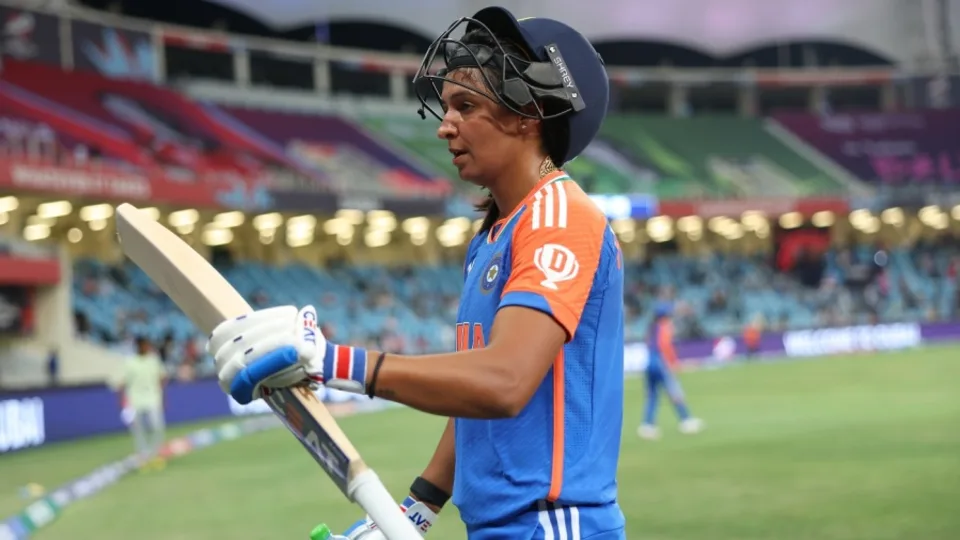
Australia vs India
Sharjah, 6pm local time
Australia have major injury concerns heading into the crucial clash. Just four balls into the match against Pakistan, Tayla Vlaeminck was out with a right shoulder dislocation. To make things worse, captain Alyssa Healy suffered an acute right foot injury while batting on 37 as she hobbled off the field with Australia needing 14 runs to win. Both players went for scans on Saturday.
India captain Harmanpreet Kaur who had hurt her neck in the match against Pakistan, turned up with a pain-relief patch on the right side of her neck during the Sri Lanka match. She also didn’t take the field during the chase. Fast bowler Pooja Vastrakar bowled full-tilt before the Sri Lanka game but didn’t play.
India will want a big win against Australia. If they win by more than 61 runs, they will move ahead of Australia, thereby automatically qualifying for the semi-final. In a case where India win by fewer than 60 runs, they will hope New Zealand win by a very small margin against Pakistan on Monday. For instance, if India make 150 against Australia and win by exactly 10 runs, New Zealand need to beat Pakistan by 28 runs defending 150 to go ahead of India’s NRR. If India lose to Australia by more than 17 runs while chasing a target of 151, then New Zealand’s NRR will be ahead of India, even if Pakistan beat New Zealand by just 1 run while defending 150.
Overall, India have won just eight out of 34 T20Is they’ve played against Australia. Two of those wins came in the group-stage games of previous T20 World Cups, in 2018 and 2020.
Australia squad:
Alyssa Healy (capt & wk), Darcie Brown, Ashleigh Gardner, Kim Garth, Grace Harris, Alana King, Phoebe Litchfield, Tahlia McGrath, Sophie Molineux, Beth Mooney, Ellyse Perry, Megan Schutt, Annabel Sutherland, Tayla Vlaeminck, Georgia Wareham
India squad:
Harmanpreet Kaur (capt), Smriti Mandhana (vice-capt), Yastika Bhatia (wk), Shafali Verma, Deepti Sharma, Jemimah Rodrigues, Richa Ghosh (wk), Pooja Vastrakar, Arundhati Reddy, Renuka Singh, D Hemalatha, Asha Sobhana, Radha Yadav, Shreyanka Patil, S Sajana
Tournament form guide:
Australia have three wins in three matches and are coming into this contest having comprehensively beaten Pakistan. With that win, they also all but sealed a semi-final spot thanks to their net run rate of 2.786. India have two wins in three games. In their previous match, they posted the highest total of the tournament so far – 172 for 3 and in return bundled Sri Lanka out for 90 to post their biggest win by runs at the T20 World Cup.
Players to watch:
Two of their best batters finding their form bodes well for India heading into the big game. Harmanpreet and Mandhana’s collaborative effort against Pakistan boosted India’s NRR with the semi-final race heating up. Mandhana, after a cautious start to her innings, changed gears and took on Sri Lanka’s spinners to make 50 off 38 balls. Harmanpreet, continuing from where she’d left against Pakistan, played a classic, hitting eight fours and a six on her way to a 27-ball 52. It was just what India needed to reinvigorate their T20 World Cup campaign.
[Cricinfo]
Sat Mag
Living building challenge

By Eng. Thushara Dissanayake
The primitive man lived in caves to get shelter from the weather. With the progression of human civilization, people wanted more sophisticated buildings to fulfill many other needs and were able to accomplish them with the help of advanced technologies. Security, privacy, storage, and living with comfort are the common requirements people expect today from residential buildings. In addition, different types of buildings are designed and constructed as public, commercial, industrial, and even cultural or religious with many advanced features and facilities to suit different requirements.
We are facing many environmental challenges today. The most severe of those is global warming which results in many negative impacts, like floods, droughts, strong winds, heatwaves, and sea level rise due to the melting of glaciers. We are experiencing many of those in addition to some local issues like environmental pollution. According to estimates buildings account for nearly 40% of all greenhouse gas emissions. In light of these issues, we have two options; we change or wait till the change comes to us. Waiting till the change come to us means that we do not care about our environment and as a result we would have to face disastrous consequences. Then how can we change in terms of building construction?
Before the green concept and green building practices come into play majority of buildings in Sri Lanka were designed and constructed just focusing on their intended functional requirements. Hence, it was much likely that the whole process of design, construction, and operation could have gone against nature unless done following specific regulations that would minimize negative environmental effects.
We can no longer proceed with the way we design our buildings which consumes a huge amount of material and non-renewable energy. We are very concerned about the food we eat and the things we consume. But we are not worrying about what is a building made of. If buildings are to become a part of our environment we have to design, build and operate them based on the same principles that govern the natural world. Eventually, it is not about the existence of the buildings, it is about us. In other words, our buildings should be a part of our natural environment.
The living building challenge is a remarkable design philosophy developed by American architect Jason F. McLennan the founder of the International Living Future Institute (ILFI). The International Living Future Institute is an environmental NGO committed to catalyzing the transformation toward communities that are socially just, culturally rich, and ecologically restorative. Accordingly, a living building must meet seven strict requirements, rather certifications, which are called the seven “petals” of the living building. They are Place, Water, Energy, Equity, Materials, Beauty, and Health & Happiness. Presently there are about 390 projects around the world that are being implemented according to Living Building certification guidelines. Let us see what these seven petals are.
Place
This is mainly about using the location wisely. Ample space is allocated to grow food. The location is easily accessible for pedestrians and those who use bicycles. The building maintains a healthy relationship with nature. The objective is to move away from commercial developments to eco-friendly developments where people can interact with nature.
Water
It is recommended to use potable water wisely, and manage stormwater and drainage. Hence, all the water needs are captured from precipitation or within the same system, where grey and black waters are purified on-site and reused.
Energy
Living buildings are energy efficient and produce renewable energy. They operate in a pollution-free manner without carbon emissions. They rely only on solar energy or any other renewable energy and hence there will be no energy bills.
Equity
What if a building can adhere to social values like equity and inclusiveness benefiting a wider community? Yes indeed, living buildings serve that end as well. The property blocks neither fresh air nor sunlight to other adjacent properties. In addition, the building does not block any natural water path and emits nothing harmful to its neighbors. On the human scale, the equity petal recognizes that developments should foster an equitable community regardless of an individual’s background, age, class, race, gender, or sexual orientation.
Materials
Materials are used without harming their sustainability. They are non-toxic and waste is minimized during the construction process. The hazardous materials traditionally used in building components like asbestos, PVC, cadmium, lead, mercury, and many others are avoided. In general, the living buildings will not consist of materials that could negatively impact human or ecological health.
Beauty
Our physical environments are not that friendly to us and sometimes seem to be inhumane. In contrast, a living building is biophilic (inspired by nature) with aesthetical designs that beautify the surrounding neighborhood. The beauty of nature is used to motivate people to protect and care for our environment by connecting people and nature.
Health & Happiness
The building has a good indoor and outdoor connection. It promotes the occupants’ physical and psychological health while causing no harm to the health issues of its neighbors. It consists of inviting stairways and is equipped with operable windows that provide ample natural daylight and ventilation. Indoor air quality is maintained at a satisfactory level and kitchen, bathrooms, and janitorial areas are provided with exhaust systems. Further, mechanisms placed in entrances prevent any materials carried inside from shoes.
The Bullitt Center building
Bullitt Center located in the middle of Seattle in the USA, is renowned as the world’s greenest commercial building and the first office building to earn Living Building certification. It is a six-story building with an area of 50,000 square feet. The area existed as a forest before the city was built. Hence, the Bullitt Center building has been designed to mimic the functions of a forest.
The energy needs of the building are purely powered by the solar system on the rooftop. Even though Seattle is relatively a cloudy city the Bullitt Center has been able to produce more energy than it needed becoming one of the “net positive” solar energy buildings in the world. The important point is that if a building is energy efficient only the area of the roof is sufficient to generate solar power to meet its energy requirement.
It is equipped with an automated window system that is able to control the inside temperature according to external weather conditions. In addition, a geothermal heat exchange system is available as the source of heating and cooling for the building. Heat pumps convey heat stored in the ground to warm the building in the winter. Similarly, heat from the building is conveyed into the ground during the summer.
The potable water needs of the building are achieved by treating rainwater. The grey water produced from the building is treated and re-used to feed rooftop gardens on the third floor. The black water doesn’t need a sewer connection as it is treated to a desirable level and sent to a nearby wetland while human biosolid is diverted to a composting system. Further, nearly two third of the rainwater collected from the roof is fed into the groundwater and the process resembles the hydrologic function of a forest.
It is encouraging to see that most of our large-scale buildings are designed and constructed incorporating green building concepts, which are mainly based on environmental sustainability. The living building challenge can be considered an extension of the green building concept. Amanda Sturgeon, the former CEO of the ILFI, has this to say in this regard. “Before we start a project trying to cram in every sustainable solution, why not take a step outside and just ask the question; what would nature do”?
Sat Mag
Something of a revolution: The LSSP’s “Great Betrayal” in retrospect
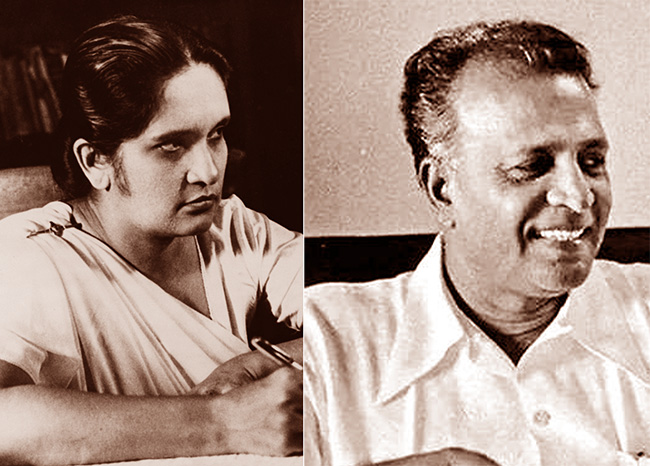
By Uditha Devapriya
On June 7, 1964, the Central Committee of the Lanka Sama Samaja Party convened a special conference at which three resolutions were presented. The first, moved by N. M. Perera, called for a coalition with the SLFP, inclusive of any ministerial portfolios. The second, led by the likes of Colvin R. de Silva, Leslie Goonewardena, and Bernard Soysa, advocated a line of critical support for the SLFP, but without entering into a coalition. The third, supported by the likes of Edmund Samarakkody and Bala Tampoe, rejected any form of compromise with the SLFP and argued that the LSSP should remain an independent party.
The conference was held a year after three parties – the LSSP, the Communist Party, and Philip Gunawardena’s Mahajana Eksath Peramuna – had founded a United Left Front. The ULF’s formation came in the wake of a spate of strikes against the Sirimavo Bandaranaike government. The previous year, the Ceylon Transport Board had waged a 17-day strike, and the harbour unions a 60-day strike. In 1963 a group of working-class organisations, calling itself the Joint Committee of Trade Unions, began mobilising itself. It soon came up with a common programme, and presented a list of 21 radical demands.
In response to these demands, Bandaranaike eventually supported a coalition arrangement with the left. In this she was opposed, not merely by the right-wing of her party, led by C. P. de Silva, but also those in left parties opposed to such an agreement, including Bala Tampoe and Edmund Samarakkody. Until then these parties had never seen the SLFP as a force to reckon with: Leslie Goonewardena, for instance, had characterised it as “a Centre Party with a programme of moderate reforms”, while Colvin R. de Silva had described it as “capitalist”, no different to the UNP and by default as bourgeois as the latter.
The LSSP’s decision to partner with the government had a great deal to do with its changing opinions about the SLFP. This, in turn, was influenced by developments abroad. In 1944, the Fourth International, which the LSSP had affiliated itself with in 1940 following its split with the Stalinist faction, appointed Michel Pablo as its International Secretary. After the end of the war, Pablo oversaw a shift in the Fourth International’s attitude to the Soviet states in Eastern Europe. More controversially, he began advocating a strategy of cooperation with mass organisations, regardless of their working-class or radical credentials.
Pablo argued that from an objective perspective, tensions between the US and the Soviet Union would lead to a “global civil war”, in which the Soviet Union would serve as a midwife for world socialist revolution. In such a situation the Fourth International would have to take sides. Here he advocated a strategy of entryism vis-à-vis Stalinist parties: since the conflict was between Stalinist and capitalist regimes, he reasoned, it made sense to see the former as allies. Such a strategy would, in his opinion, lead to “integration” into a mass movement, enabling the latter to rise to the level of a revolutionary movement.

Though controversial, Pablo’s line is best seen in the context of his times. The resurgence of capitalism after the war, and the boom in commodity prices, had a profound impact on the course of socialist politics in the Third World. The stunted nature of the bourgeoisie in these societies had forced left parties to look for alternatives. For a while, Trotsky had been their guide: in colonial and semi-colonial societies, he had noted, only the working class could be expected to see through a revolution. This entailed the establishment of workers’ states, but only those arising from a proletarian revolution: a proposition which, logically, excluded any compromise with non-radical “alternatives” to the bourgeoisie.
To be sure, the Pabloites did not waver in their support for workers’ states. However, they questioned whether such states could arise only from a proletarian revolution. For obvious reasons, their reasoning had great relevance for Trotskyite parties in the Third World. The LSSP’s response to them showed this well: while rejecting any alliance with Stalinist parties, the LSSP sympathised with the Pabloites’ advocacy of entryism, which involved a strategic orientation towards “reformist politics.” For the world’s oldest Trotskyite party, then going through a series of convulsions, ruptures, and splits, the prospect of entering the reformist path without abandoning its radical roots proved to be welcoming.
Writing in the left-wing journal Community in 1962, Hector Abhayavardhana noted some of the key concerns that the party had tried to resolve upon its formation. Abhayavardhana traced the LSSP’s origins to three developments: international communism, the freedom struggle in India, and local imperatives. The latter had dictated the LSSP’s manifesto in 1936, which included such demands as free school books and the use of Sinhala and Tamil in the law courts. Abhayavardhana suggested, correctly, that once these imperatives changed, so would the party’s focus, though within a revolutionary framework. These changes would be contingent on two important factors: the establishment of universal franchise in 1931, and the transfer of power to the local bourgeoisie in 1948.
Paradoxical as it may seem, the LSSP had entered the arena of radical politics through the ballot box. While leading the struggle outside parliament, it waged a struggle inside it also. This dual strategy collapsed when the colonial government proscribed the party and the D. S. Senanayake government disenfranchised plantation Tamils. Suffering two defeats in a row, the LSSP was forced to think of alternatives. That meant rethinking categories such as class, and grounding them in the concrete realities of the country.
This was more or less informed by the irrelevance of classical and orthodox Marxian analysis to the situation in Sri Lanka, specifically to its rural society: with a “vast amorphous mass of village inhabitants”, Abhayavardhana observed, there was no real basis in the country for a struggle “between rich owners and the rural poor.” To complicate matters further, reforms like the franchise and free education, which had aimed at the emancipation of the poor, had in fact driven them away from “revolutionary inclinations.” The result was the flowering of a powerful rural middle-class, which the LSSP, to its discomfort, found it could not mobilise as much as it had the urban workers and plantation Tamils.
Where else could the left turn to? The obvious answer was the rural peasantry. But the rural peasantry was in itself incapable of revolution, as Hector Abhayavardhana has noted only too clearly. While opposing the UNP’s Westernised veneer, it did not necessarily oppose the UNP’s overtures to Sinhalese nationalism. As historians like K. M. de Silva have observed, the leaders of the UNP did not see their Westernised ethos as an impediment to obtaining support from the rural masses. That, in part at least, was what motivated the Senanayake government to deprive Indian estate workers of their most fundamental rights, despite the existence of pro-minority legal safeguards in the Soulbury Constitution.
To say this is not to overlook the unique character of the Sri Lankan rural peasantry and petty bourgeoisie. Orthodox Marxists, not unjustifiably, characterise the latter as socially and politically conservative, tilting more often than not to the right. In Sri Lanka, this has frequently been the case: they voted for the UNP in 1948 and 1952, and voted en masse against the SLFP in 1977. Yet during these years they also tilted to the left, if not the centre-left: it was the petty bourgeoisie, after all, which rallied around the SLFP, and supported its more important reforms, such as the nationalisation of transport services.
One must, of course, be wary of pasting the radical tag on these measures and the classes that ostensibly stood for them. But if the Trotskyite critique of the bourgeoisie – that they were incapable of reform, even less revolution – holds valid, which it does, then the left in the former colonies of the Third World had no alternative but to look elsewhere and to be, as Abhayavardhana noted, “practical men” with regard to electoral politics. The limits within which they had to work in Sri Lanka meant that, in the face of changing dynamics, especially among the country’s middle-classes, they had to change their tactics too.
Meanwhile, in 1953, the Trotskyite critique of Pabloism culminated with the publication of an Open Letter by James Cannon, of the US Socialist Workers’ Party. Cannon criticised the Pabloite line, arguing that it advocated a policy of “complete submission.” The publication of the letter led to the withdrawal of the International Committee of the Fourth International from the International Secretariat. The latter, led by Pablo, continued to influence socialist parties in the Third World, advocating temporary alliances with petty bourgeois and centrist formations in the guise of opposing capitalist governments.
For the LSSP, this was a much-needed opening. Even as late as 1954, three years after S. W. R. D. Bandaranaike formed the SLFP, the LSSP continued to characterise the latter as the alternative bourgeois party in Ceylon. Yet this did not deter it from striking up no contest pacts with Bandaranaike at the 1956 election, a strategy that went back to November 1951, when the party requested the SLFP to hold a discussion about the possibility of eliminating contests in the following year’s elections. Though it extended critical support to the MEP government in 1956, the LSSP opposed the latter once it enacted emergency measures in 1957, mobilising trade union action for a period of three years.
At the 1960 election the LSSP contested separately, with the slogan “N. M. for P.M.” Though Sinhala nationalism no longer held sway as it had in 1956, the LSSP found itself reduced to a paltry 10 seats. It was against this backdrop that it began rethinking its strategy vis-à-vis the ruling party. At the throne speech in April 1960, Perera openly declared that his party would not stabilise the SLFP. But a month later, in May, he called a special conference, where he moved a resolution for a coalition with the party. As T. Perera has noted in his biography of Edmund Samarakkody, the response to the resolution unearthed two tendencies within the oppositionist camp: the “hardliners” who opposed any compromise with the SLFP, including Samarakkody, and the “waverers”, including Leslie Goonewardena.
These tendencies expressed themselves more clearly at the 1964 conference. While the first resolution by Perera called for a complete coalition, inclusive of Ministries, and the second rejected a coalition while extending critical support, the third rejected both tactics. The outcome of the conference showed which way these tendencies had blown since they first manifested four years earlier: Perera’s resolution obtained more than 500 votes, the second 75 votes, the third 25. What the anti-coalitionists saw as the “Great Betrayal” of the LSSP began here: in a volte-face from its earlier position, the LSSP now held the SLFP as a party of a radical petty bourgeoisie, capable of reform.
History has not been kind to the LSSP’s decision. From 1970 to 1977, a period of less than a decade, these strategies enabled it, as well as the Communist Party, to obtain a number of Ministries, as partners of a petty bourgeois establishment. This arrangement collapsed the moment the SLFP turned to the right and expelled the left from its ranks in 1975, in a move which culminated with the SLFP’s own dissolution two years later.
As the likes of Samarakkody and Meryl Fernando have noted, the SLFP needed the LSSP and Communist Party, rather than the other way around. In the face of mass protests and strikes in 1962, the SLFP had been on the verge of complete collapse. The anti-coalitionists in the LSSP, having established themselves as the LSSP-R, contended later on that the LSSP could have made use of this opportunity to topple the government.
Whether or not the LSSP could have done this, one can’t really tell. However, regardless of what the LSSP chose to do, it must be pointed out that these decades saw the formation of several regimes in the Third World which posed as alternatives to Stalinism and capitalism. Moreover, the LSSP’s decision enabled it to see through certain important reforms. These included Workers’ Councils. Critics of these measures can point out, as they have, that they could have been implemented by any other regime. But they weren’t. And therein lies the rub: for all its failings, and for a brief period at least, the LSSP-CP-SLFP coalition which won elections in 1970 saw through something of a revolution in the country.
The writer is an international relations analyst, researcher, and columnist based in Sri Lanka who can be reached at udakdev1@gmail.com
-
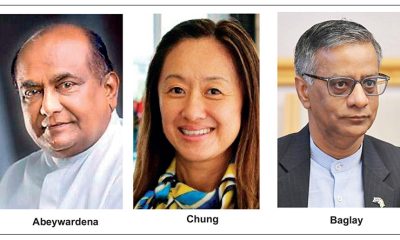
 Features7 days ago
Features7 days agoFinally, Mahinda Yapa sets the record straight
-
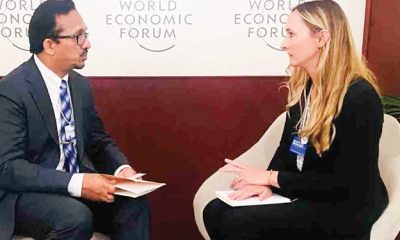
 Features7 days ago
Features7 days agoHandunnetti and Colonial Shackles of English in Sri Lanka
-
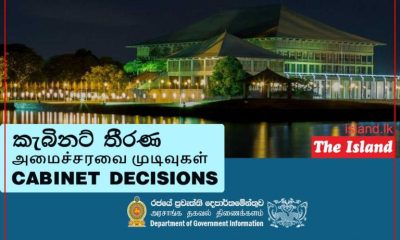
 Business5 days ago
Business5 days agoCabinet approves establishment of two 50 MW wind power stations in Mullikulum, Mannar region
-
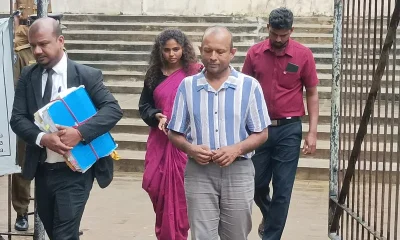
 News6 days ago
News6 days agoGota ordered to give court evidence of life threats
-

 Features6 days ago
Features6 days agoCliff and Hank recreate golden era of ‘The Young Ones’
-

 Features6 days ago
Features6 days agoSri Lanka and Global Climate Emergency: Lessons of Cyclone Ditwah
-
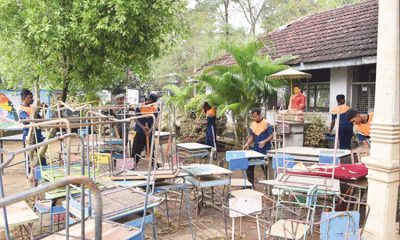
 Opinion7 days ago
Opinion7 days agoA national post-cyclone reflection period?
-

 Latest News6 days ago
Latest News6 days agoSri Lanka squad named for ACC Men’s U19 Asia Cup













